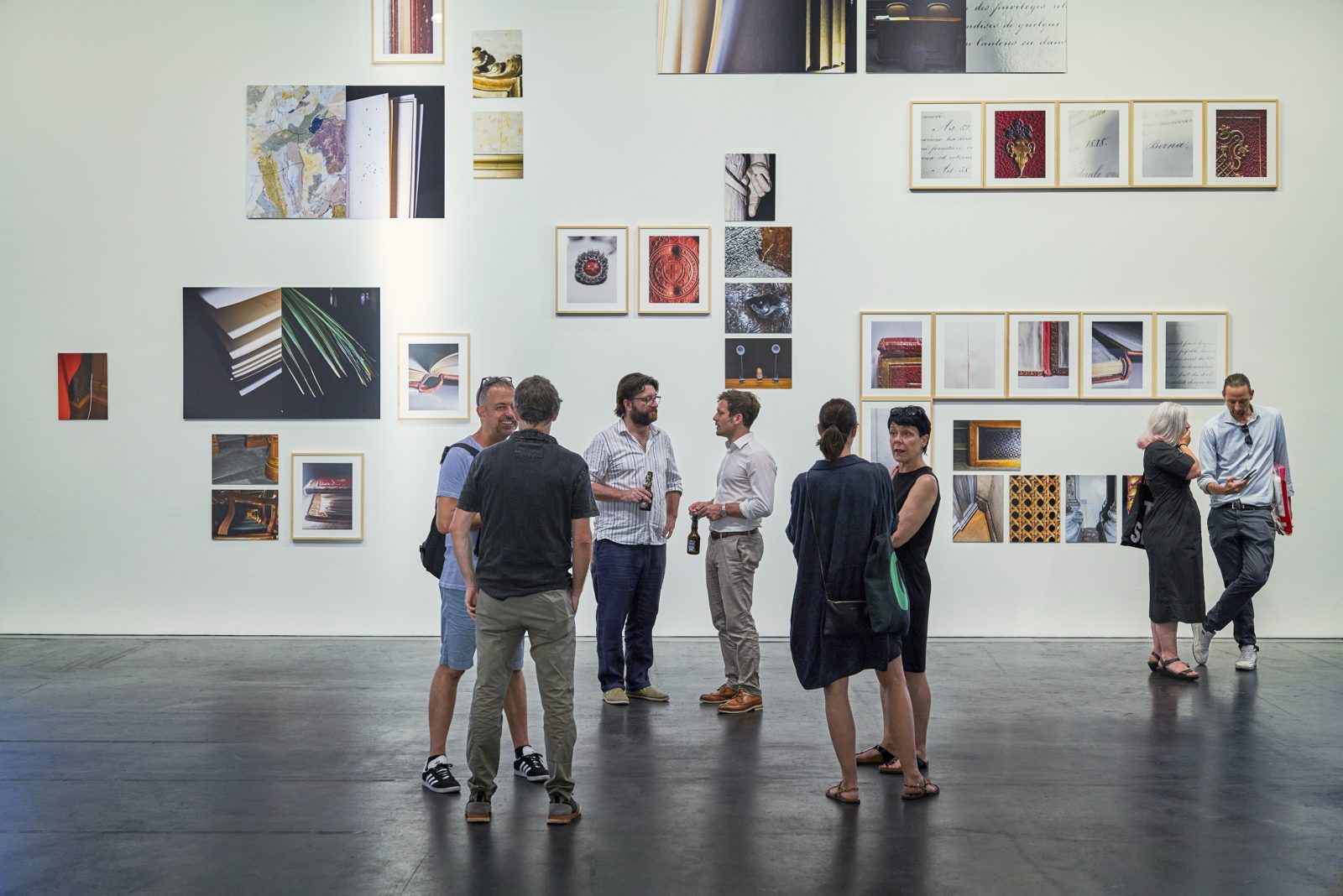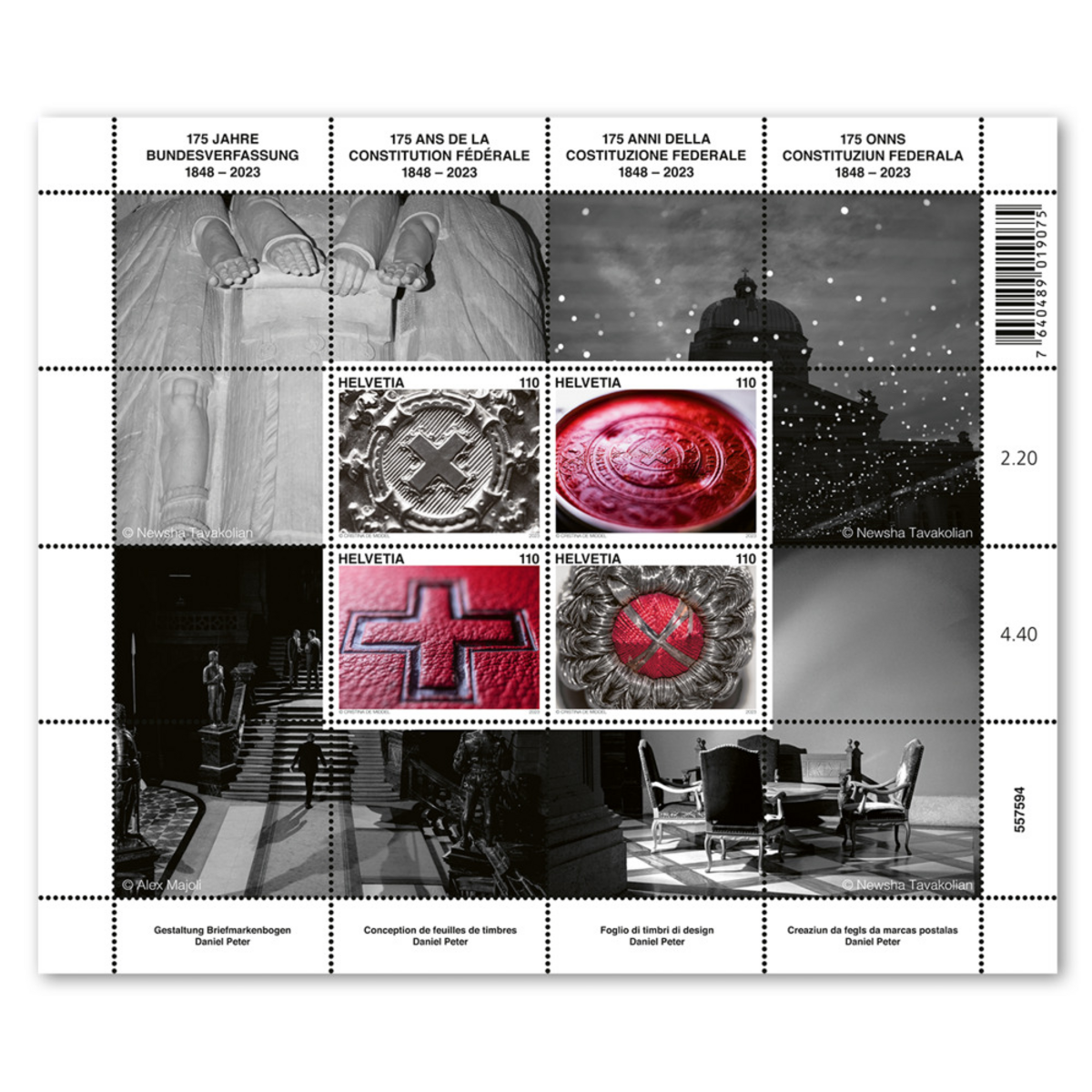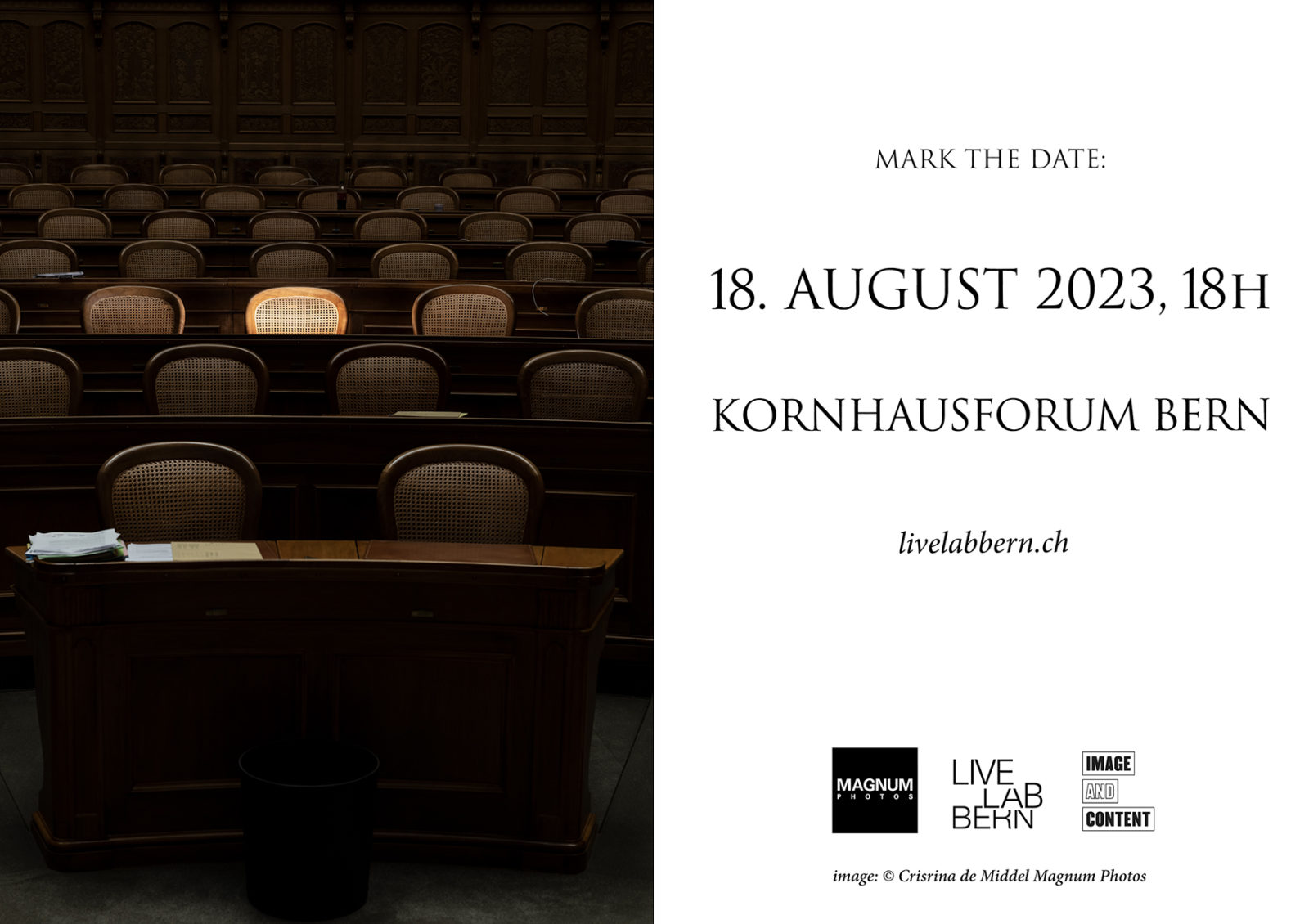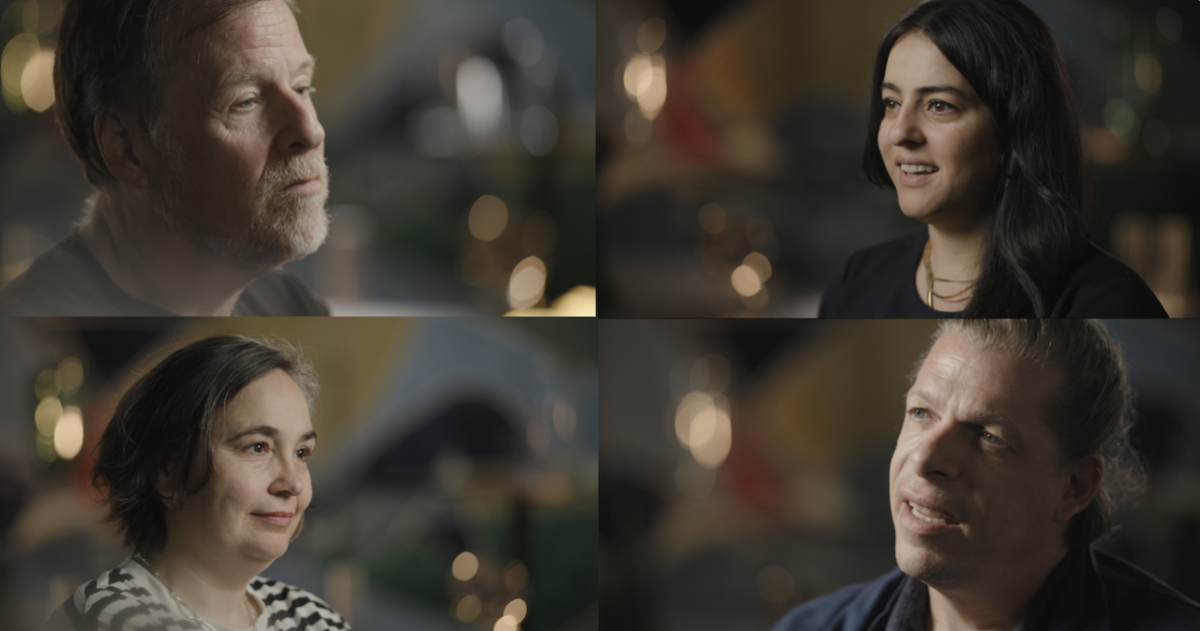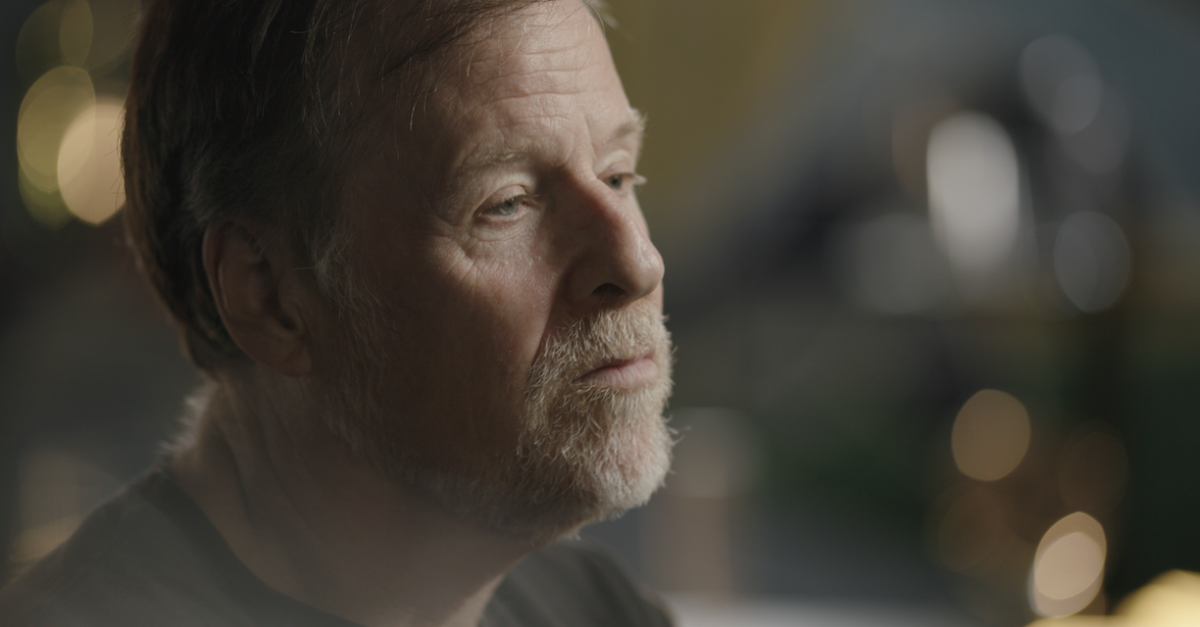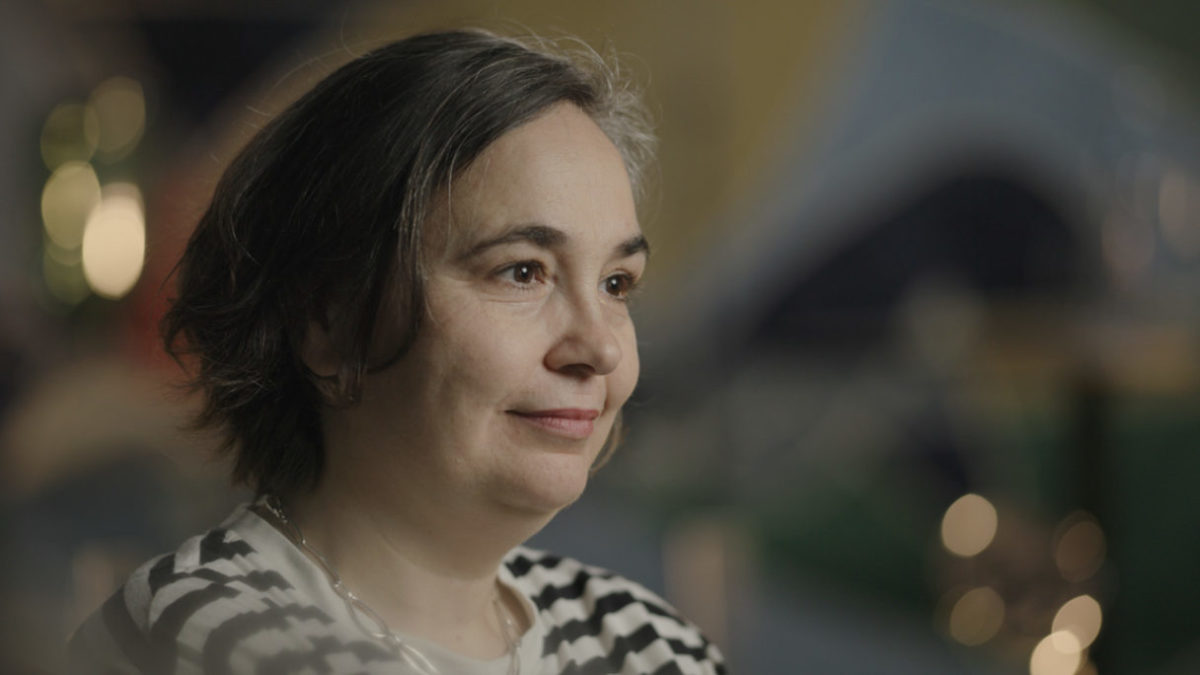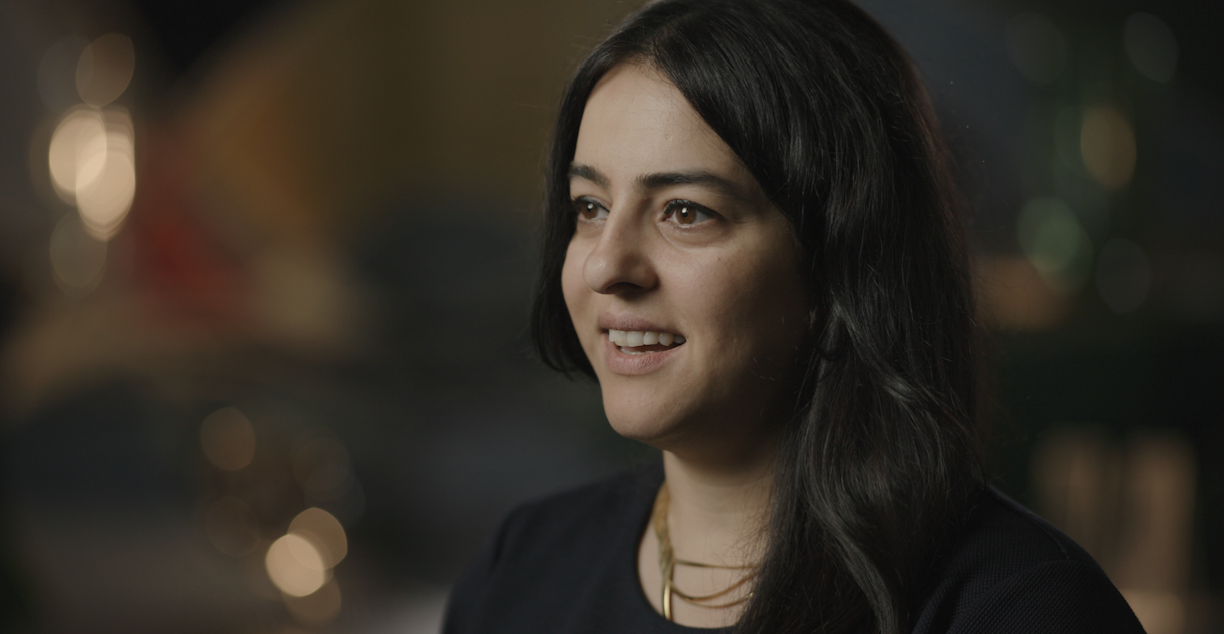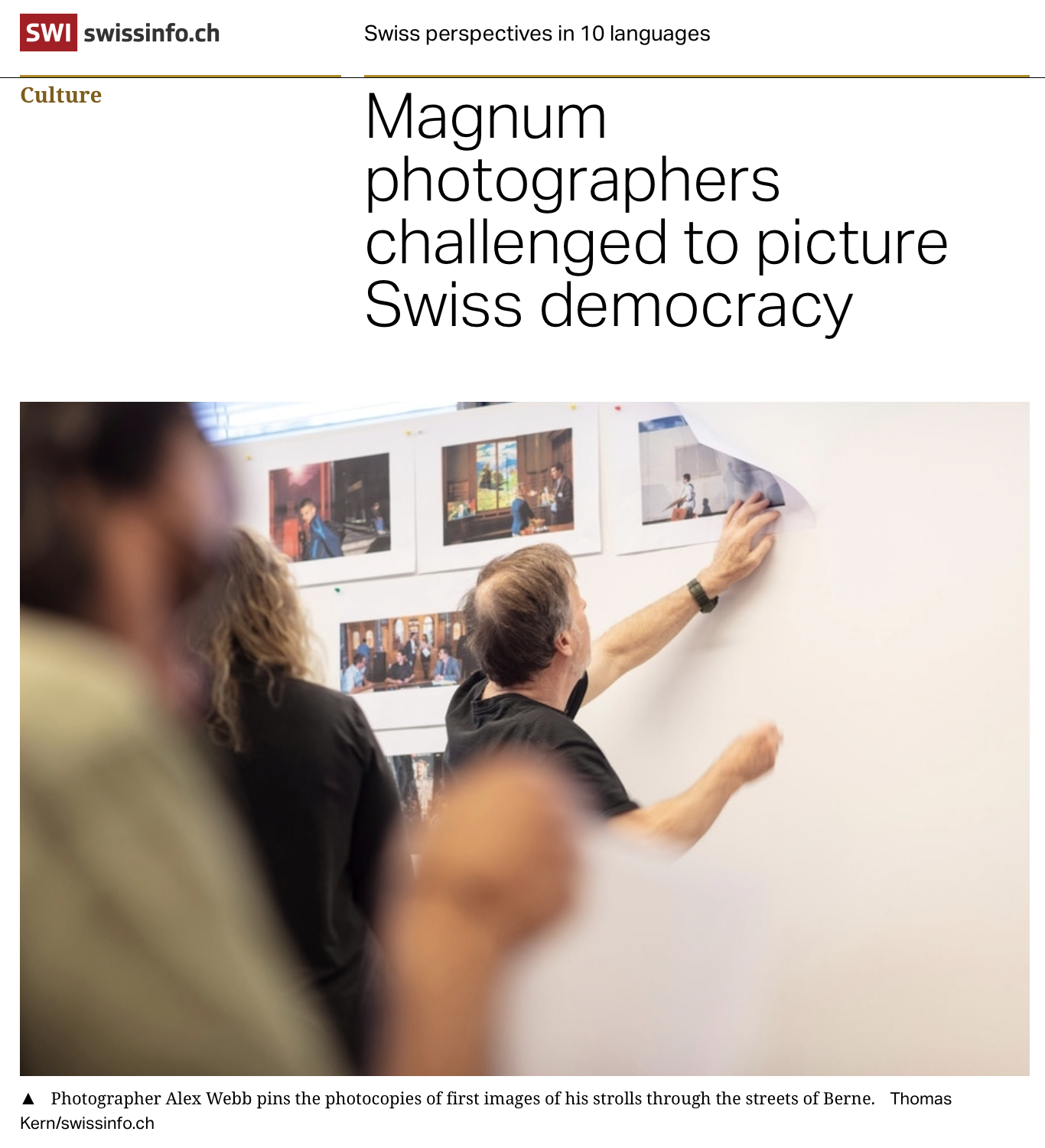Teaser

SESSION is a multimedia project and the result of the LiveLab Bern event, that was held in June of 2022 in and around the Federal Palace in Bern/Switzerland.
LiveLab is a proven artist-in-residence program developed for a group of MAGNUM photographers, students and locals. The images that were produced during the 2-week lab will be shown in exhibitions and a photobook as well as a behind-the-scenes documentary film.
It will premiere on August 18th 2023 at 6PM at the Kornhausforum in Bern.
Following LiveLabs in cities such as London, Shenzhen, Moscow, and Paris, the focus of LiveLab Bern was on the political process in and around Bern’s Federal Palace. Cristina de Middel (Brazil), Newsha Tavakolian (Iran), Alex Webb (USA), and Alex Majoli (Italy) photographed the Swiss Parliament’s 2022 summer session in Bern for two weeks. This outsider’s view on federal politics provides new and interesting ideas from a variety of perspectives.
In MAGNUM PHOTOS group projects, an unfamiliar location is simultaneously investigated and revealed from several perspectives and in different visual languages.
The four photographers edited and selected their photographs in a public, experimental studio at the School of Design in Bern with Swiss curator Melody Gygax. This is a dynamic and creative endeavor that takes both the photographers and the viewers on a voyage of discovery. The approach is typical of MAGNUM PHOTOS and emphasizes the collective’s collaborative mentality.
The LiveLab, as well as the photographing process, was captured on film. This documentary, directed by Reto Caduff, and the selected images will be shown to the public at the Kornhausforum in Bern from 18. August until September 3. 2023. In addition to the exhibition and film, a photo book will be published as well. This is part of the 175th anniversary of the Federal Constitution.
LiveLab Bern is supported by the Swiss Parliament. It is a collaboration between MAGNUM PHOTOS, IMAGE and CONTENT, STURM & DRANG publishers and the School of Design Bern and Biel. It is coordinated by Andréa Holzherr, Global Cultural Director at MAGNUM PHOTOS, Paris together with Reto Caduff and Melody Gygax.
The latest news on LiveLab Bern
Meet the team
Contact
A documentary film on the LiveLab Bern

The film will premiere August 18th 2023 at the Kornhausforum in Bern and show the behind-the-scenes of the project, featuring interviews with the photographers as well as curators and politicians.
A photobook with images from the LiveLabBern session by photographers Cristina de Middel, Newsha Tavakolian, Alex Majoli and Alex Webb and two essays is released through Sturm & Drang publishers.
Hardcover, 192 pages, 24 x 32 cm with fold-out pages. In German/English.

You can order it here: https://sturmanddrang.net/products/session
Session-Project in Berlin
“Human dignity is inviolable” (Article 1 of the Grundgesetz in Germany). The Basic Law was promulgated on May 23, 1949, and to this day guarantees respect for fundamental and human rights as well as democracy and the rule of law in Germany.
On the occasion of the 75th anniversary of the promulgation of the Basic Law in the Federal Republic of Germany, the Democracy Festival took place from May 24 – 26 2024 around the Bundestag and the Chancellery – as the Swiss Embassy in Berlin.
A selection of images from our Session Project was the focus point of the Swiss participation of the festival.
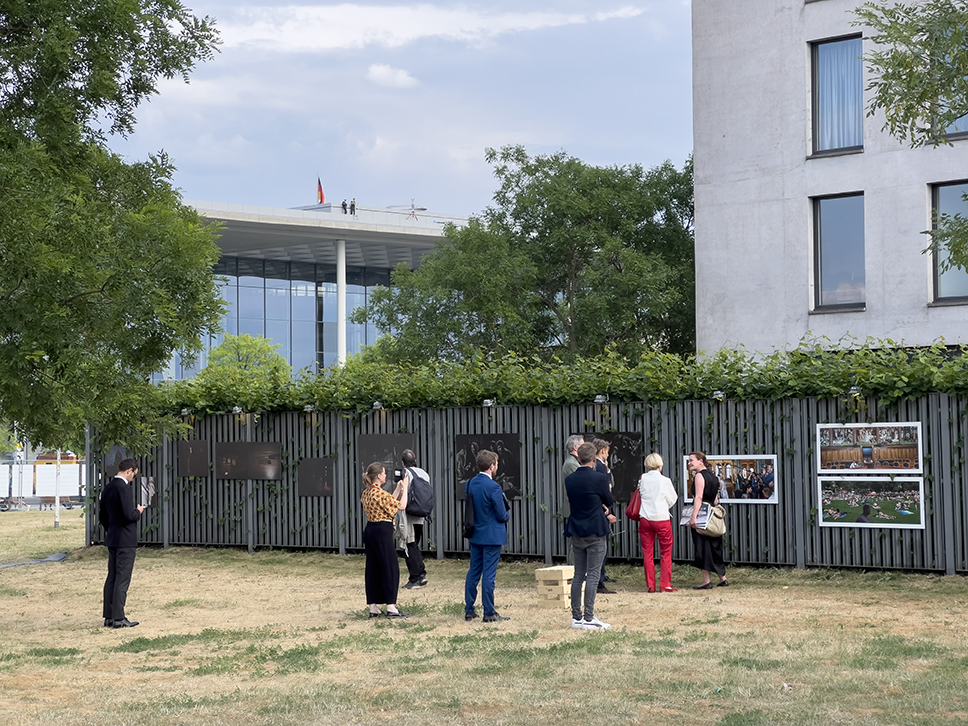
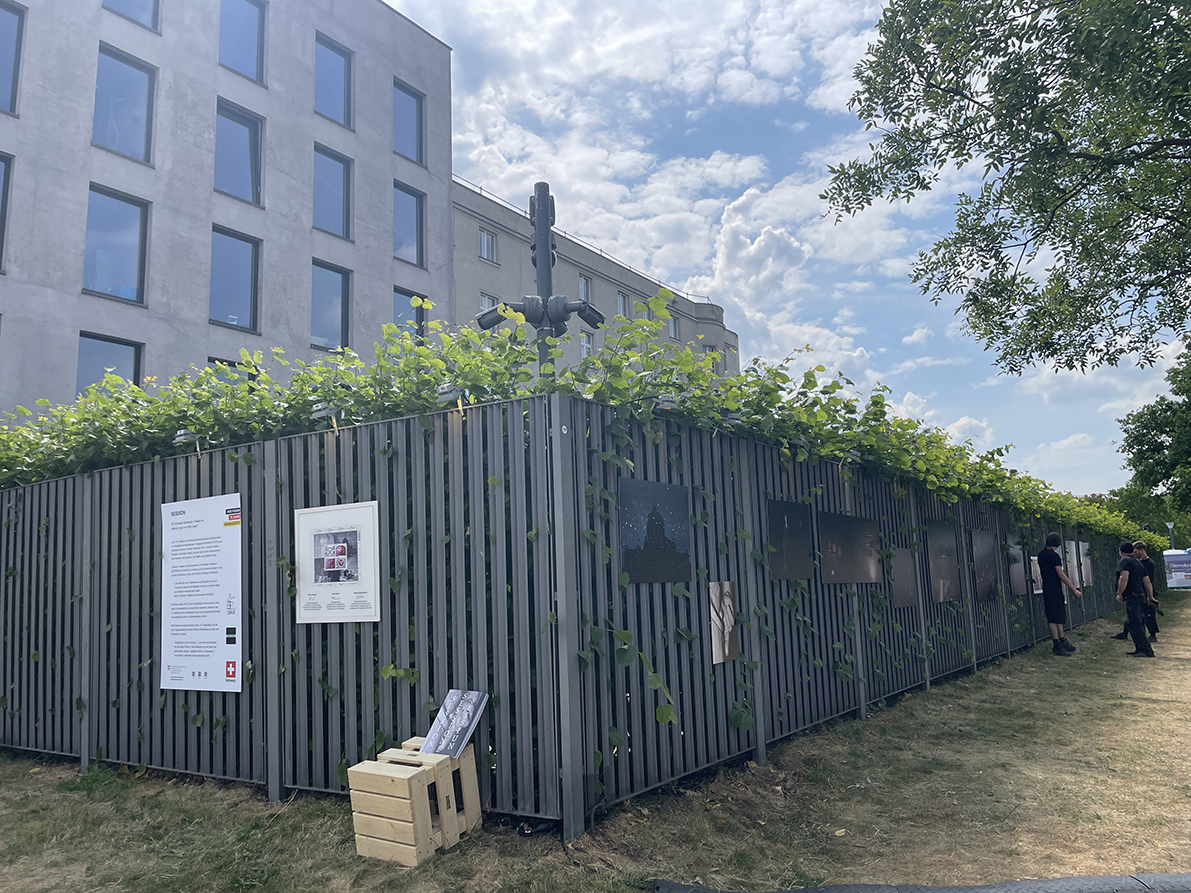
image credit: © Jérôme Depierre

LiveLab Bern exhibition 2023
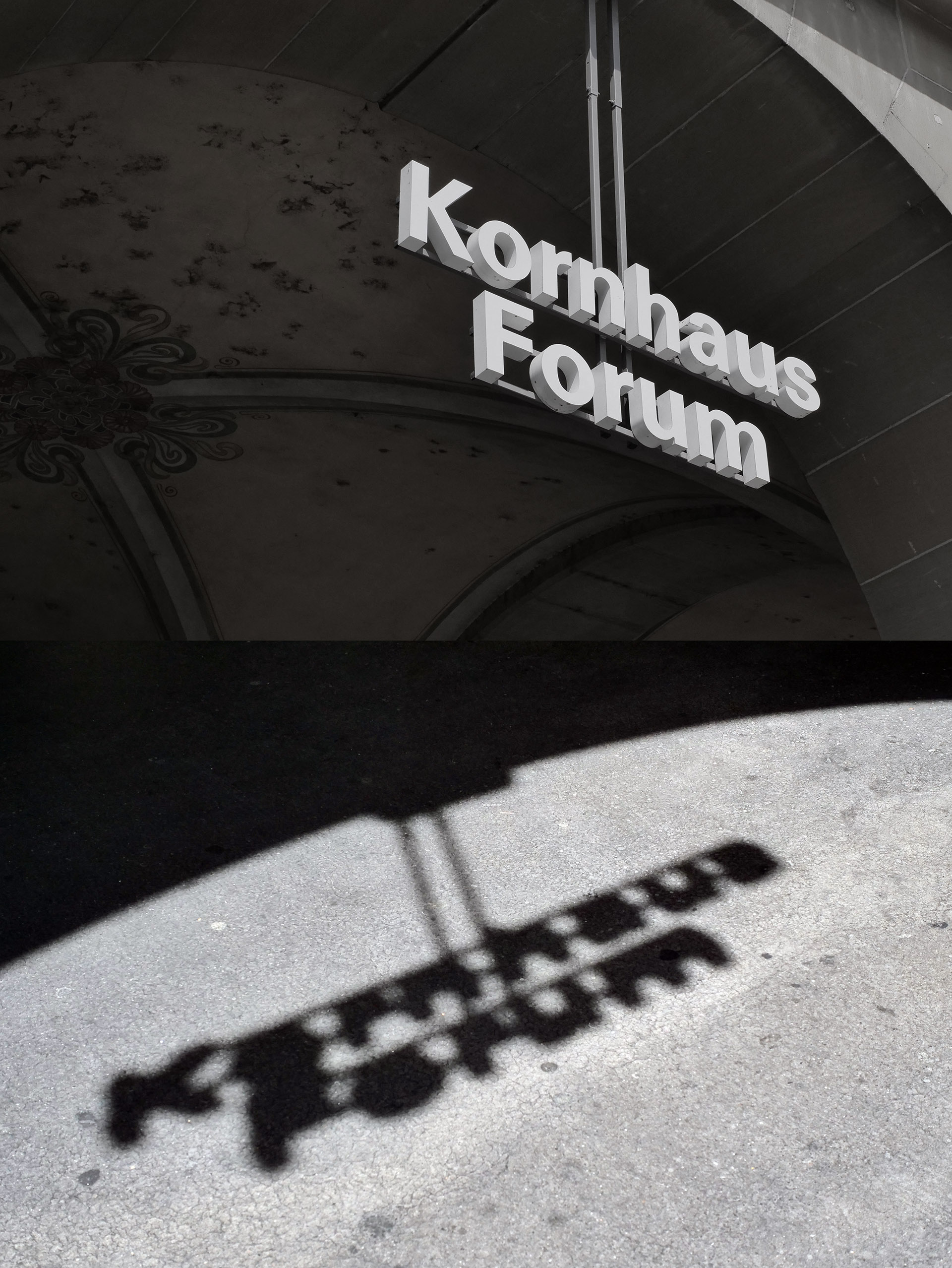 The LiveLab Bern exhibition took place from August 18th 2023 – September 2nd 2023 at the Kornhaus Forum Bern, only steps from the Federal Palace.Session
The LiveLab Bern exhibition took place from August 18th 2023 – September 2nd 2023 at the Kornhaus Forum Bern, only steps from the Federal Palace.Session
